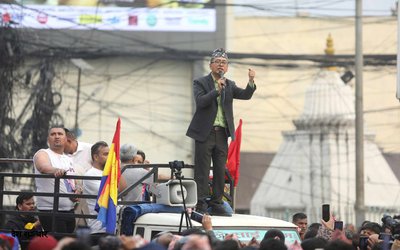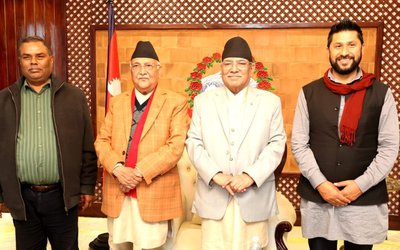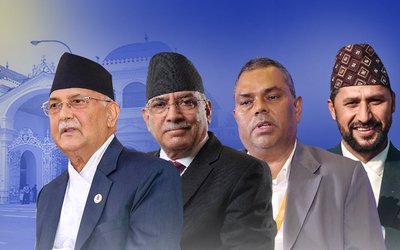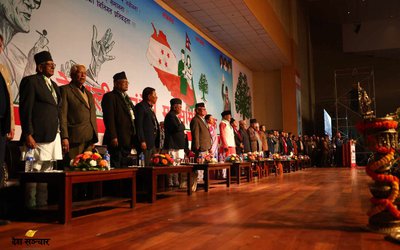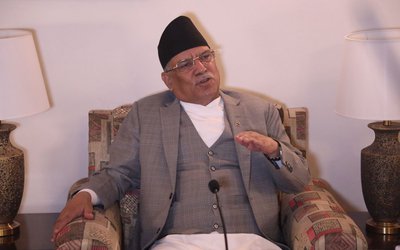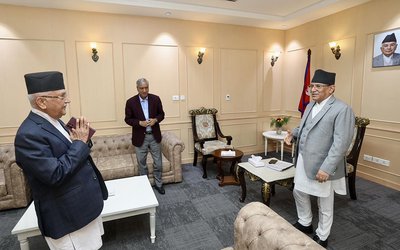Faced with a choice between a package that may or may not impart him/her with employable skills, that too in a situation of massive un/underemployment in the country (and getting a job means having to work) and a cash reward of at least Rs 500,000 for, well, doing nothing, a rational person is likely to opt for the latter without second thoughts.
And the prediction that yours humbly made in a blog post has come true. During the Maoist combatant categorization process—pursuant to the 1 November seven-point deal between the political parties controlling Nepal—the majority of the combatants in cantonments are reported to have opted for integration into the national army, with those opting for retirement with cash a close second, and only a negligible number preferring the non-cash rehab package. While a maximum of 6,500 of interested combatants could be integrated into a separate directorate of the Nepal Army, the rest had to choose between a package of education, training and vocational opportunity (with the cost ranging from Rs 600,000 to Rs 900,000), and voluntary retirement with cash of Rs 500,000 to Rs 800,000. With the latest re-verification exercise putting the total number of combatants at 16,508—2,795 less than that verified by UNMIN—at least 10,008 combatants will have to be “compensated”. (At least because not all of those who want to join the national army may meet the minimum eligibility criteria, and the Maoists are insisting “late-comers” be considered too).
The cost to the treasury of the direct cash payment would be at least Rs 6.5 billion, taking Rs 650,000 as an average payment per combatant. On the higher side, it would run up to Rs 8 billion. Of course, the combatants who have opted for the cash reward are unlikely to get the full amount they are entitled to: they will have to part with a portion of it as a levy to their beloved party (50 percent going by media reports). One need not be surprised if most of them splurge the money on gambling and drinking or other consumptive activities, or simply spend it to meet basic needs. The possibility of turning to crime when the cash runs out cannot be ruled out. Quite a few may use the cash to get an overseas job, but not without the irony that combatants of a Maoist party that officially is in favour of creating employment opportunities for Nepalis in their homeland and that heads the government have to seek work on foreign shores with money from the state’s coffers.
Instead of doling out cash, it would have been sensible to provide only the option of productive work to those not joining the army. This would not only help the combatants themselves and their families in the long run, but also contribute to the economy, not least by adding to the GDP and opening up further employment opportunities. How? Here are a few ideas but surely party-affiliated buddhijivis, members of the National Planning Commission and the PM’s team of economic advisors, among others, should be able to come up with even better ones (or else hang up their boots)—vocational training, internship, subsidized credit and other incentives for setting up own business (cottage and small enterprises), employment in infrastructure projects, some sort of employment guarantee, etc.
Perhaps the Maoists, in yet another volte face, are now seeing wisdom, albeit perversely, in the neoliberal preference for direct cash transfers, supposedly least market distorting, as a support measure for “vulnerable” groups. By this logic, the combatants should be free to choose the form of rehabilitation; guiding them into economic activities will interfere with the free workings of the market. Marx displaced by Friedman in a revolutionary party? Dr Sahib leaders of Nepali Congress happy now? And the slogan of creating a swadheen economy can always be reinterpreted as per the demands of the dialectics of opportunism, right, comrades?
Notwithstanding all these, we are assuming that all the re-verified combatants in the cantonments were also combatants during the Maoist insurgency, and that integrating them into the Nepal Army or rehabilitating them will lead to peace. That’s a heroic assumption, although they have been “verified” as such. That a significant number of core fighters have assumed new avatars in other wings of the party has been a robust charge leveled by Nepali Congressites, among others.
Then there is the issue of justice, but raising it runs the risk of being accused of attempting to throw a spanner in the works of a “historic” peace accord. Still, a cabbie—a janta ko chhoro to the core—confided to this scribe the morning after the deal: doesn’t the deal disincentivize earning a living through legal and peaceful means?
Parking Rs 500,000—the minimum amount of “reward”—in a fixed deposit account in a financial institution in Kathmandu fetching an interest of at least 12 percent will give the recipient of the largesse a steady flow of income of Rs 57,000 (after deducting 5% tax on the interest) per year, or Rs 4,750 per month, in addition to the capital of half a million rupees. From Maoists to Capitalists overnight – quite a transition! Moreover, that income is nearly thrice the per capita average national poverty line (the latest one used by the Central Bureau of Statistics for Nepal Living Standard Survey (NLSS) III, 2010/11) and also more than the poverty line for urban Kathmandu. It is also more than the per capita nominal Gross National Income for the year 2010/11. By the way, according to NLSS III, the poverty incidence in urban Kathmandu is 11.147 percent and that in the whole country 25 percent. With Rs 8 billion, at least 55 MW of hydroelectricity can be generated.
Nepal’s donors welcomed the deal. How about footing the entire bill in grant form, without diverting aid from other sectors, and/or providing employment to ex-combatants on donor-country soil in the true spirit of solidarity, humanity, compassion and all that jazz?
- TANAHU HYDROPOWER PROEJCT: A Significant Achievement
- Apr 15, 2024
- AMBASSADOR HANAN GODAR: Sharing Pain With A Nepali Family
- Mar 30, 2024
- VISIT OF KfW AND EIB TO NEPAL : Mission Matters
- Mar 25, 2024
- NEPAL BRITAIN SOCIETY: Pratima Pande's Leadership
- Mar 24, 2024
- NEPAL ARMY DAY: Time To Recall Glory
- Mar 15, 2024

